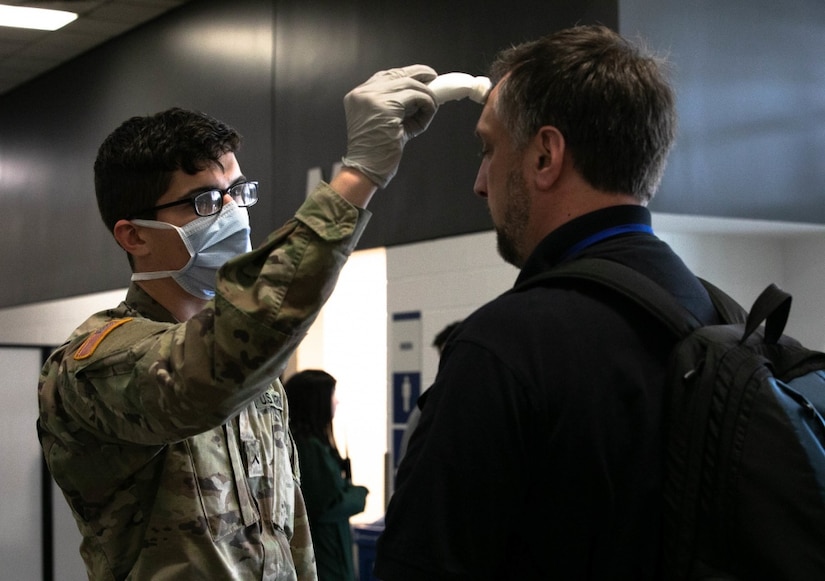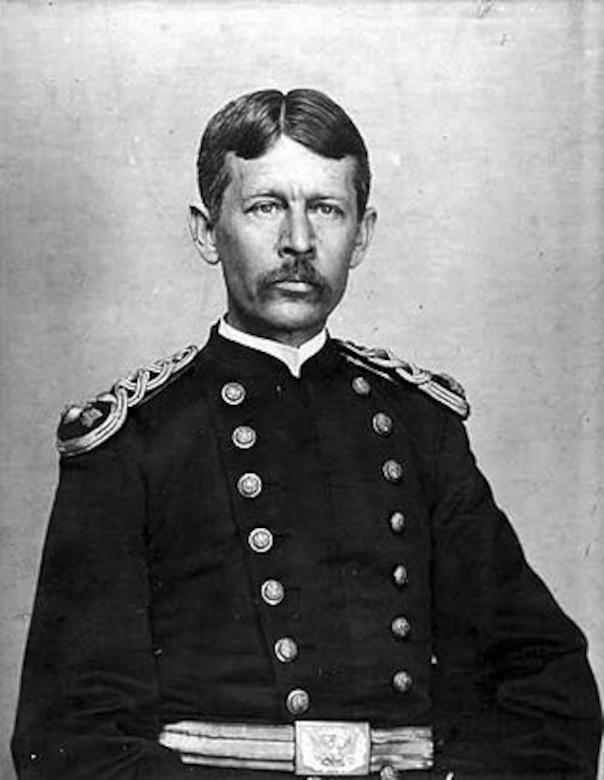April 23, 2020 | BY Terri Moon Cronk , DOD News
More than 56,400 Defense Department personnel are on
the front lines of the war against the silent enemy known as the COVID-19 virus
that's affected the nation, a DOD spokesman said.
Active-duty service members, reservists and National
Guardsmen medical personnel and support troops are in place waging the fight
against the virus, Army Lt. Col Chris Mitchell said yesterday.
Doctors, nurses, Army medics and Navy corpsmen are
treating COVID-19 and non-COVID-19 cases in support of local-area health-care
workers.
U.S. Northern Command is responsible for DOD's
active-duty personnel, with more than 14,000 people deployed, including 4,320
medical personnel, in support of response operations. And more than 1,000
medical providers are embedded nationwide within local hospitals, according to
Northcom.
Nearly 3,000 Army Reserve soldiers support COVID-19
response via the 14 Army Urban Augmentation Medical Task Forces in these
locations:
1 New York City, with six UAMTFs supporting the
alternate care facility at the Jacob K. Javits Convention Center and local
hospitals.
2 New Jersey, with three UAMTFs supporting the Edison
Exposition Center, Newark University Hospital, the Atlantic City Convention
Center alternate care facility and Salem Hospital.
3 Stamford, Conn., with one UAMTF at the Bennett
Medical Center treating patients. Additional help is due to arrive this week.
4 Massachusetts, with a UAMTF at the Boston Convention
and Exposition Center alternate care facility and another at Tewksbury Hospital
that will be fully operational later this week.
5 Pennsylvania, with a UAMTF for the Temple University
alternate care facility, and one in East Stroudsburg that has achieved initial
operational capability.
6 Detroit, with a UAMTF at the TCF Center alternate
care facility.
A Navy Expeditionary Medical Facility detachment is
also at work at an alternate care facility in New Orleans' Ernest N. Morial
Convention Center, and is providing support in Baton Rouge, La.
More than 350 Navy, Air Force and Army Reserve citizen
warriors were mobilized in the last week to support the DOD COVID-19 response.
Most reservists will deploy to New York City hospitals to assist on the front
lines. More than 5,100 reservists are on military orders supporting COVID-19
operations.
The Navy Reserve has more than 1,500 sailors engaged
in COVID-19 pandemic relief efforts around the world, including more than 650
reservists at the Javits Convention Center alternate care facility and
hospitals in the New York City area, and more than 200 reservists are serving
aboard the Navy hospital ships USNS Mercy and USNS Comfort.
The Air Force Reserve mobilized more than 150 medical
professionals to New York City, and they were expected to arrive at Joint Base
McGuire-Dix-Lakehurst, New Jersey, yesterday.
National Guard Troops
Nearly 42,000 National Guardsmen are supporting
COVID-19 response at the direction of their governors. State priorities are
focused on testing and screening, and providing logistical support through
warehousing and distribution of medical supplies and food.
DOD's readiness posture is not degraded, Mitchell
said. "Any time service members put their skills to use, it sharpens the
sword. They're going to be better prepared to deal with this kind of thing next
time around because they're using their skills and testing processes and things
like that in a situation where they're under stress."










